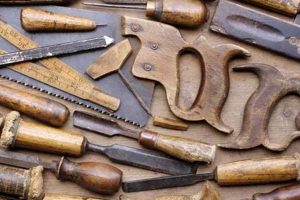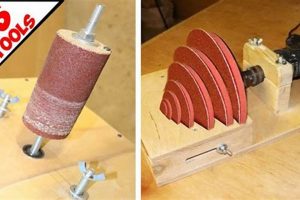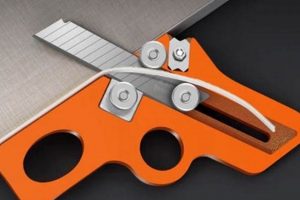The phrase highlights implements utilized in the craft of shaping wood, encompassing both recent innovations and updated versions of established designs. This category can include items powered by electricity, pneumatics, or manual force, intended for tasks such as cutting, shaping, joining, and finishing wooden materials. Examples range from advanced computer numerically controlled (CNC) routers to ergonomic hand planes.
The availability of updated and innovative instruments significantly impacts efficiency, precision, and safety within woodworking. Modern advancements can lead to reduced project times, more intricate designs, and a decreased risk of operator injury. Historically, the evolution of these items has paralleled technological advancements, enabling woodworkers to achieve increasingly sophisticated results. Investment in appropriate equipment can enhance the quality of finished products and expand the range of possible projects.
The subsequent sections will delve into specific categories of such equipment, providing an overview of their functionalities, advantages, and considerations for selection. This includes an examination of both power tools and hand tools, as well as related accessories and safety equipment.
Guidance on Leveraging Modern Woodworking Implements
The following provides practical advice for selecting, utilizing, and maintaining updated instruments in woodworking applications.
Tip 1: Prioritize Safety Training. Before operating any new woodworking instrument, ensure a thorough understanding of its operational procedures and safety protocols. Consult the manufacturer’s manual and seek professional instruction when necessary.
Tip 2: Invest in Quality. While initial cost may be higher, durable, well-constructed instruments offer greater longevity, reliability, and precision, ultimately reducing long-term expenses and improving project outcomes.
Tip 3: Consider Ergonomics. Select instruments designed with user comfort in mind. Ergonomic designs can reduce fatigue and the risk of repetitive strain injuries, especially during prolonged use.
Tip 4: Regularly Maintain Equipment. Implement a consistent maintenance schedule, including cleaning, lubrication, and sharpening, to ensure optimal performance and extend the lifespan of woodworking instruments.
Tip 5: Research and Compare. Before purchasing any new instrument, conduct thorough research to compare different models, brands, and features. Read reviews and seek recommendations from experienced woodworkers.
Tip 6: Understand Power Requirements. For electrical instruments, verify compatibility with the available power supply. Utilizing incorrect voltage or amperage can damage the instrument and pose a safety hazard.
Tip 7: Properly Store Equipment. When not in use, store woodworking instruments in a clean, dry environment to prevent rust, corrosion, and damage. Use appropriate storage solutions, such as tool chests or racks, to protect and organize equipment.
Adhering to these guidelines can facilitate efficient and safe utilization of recent woodworking innovations, maximizing project quality and minimizing potential risks.
The concluding segment will synthesize the core concepts discussed, reinforcing the advantages of embracing updated woodworking implements.
1. Enhanced Precision
The integration of updated instruments in woodworking has demonstrably amplified precision across a spectrum of operations. This enhancement arises from advancements in tool design, materials, and control mechanisms. For instance, laser-guided saws and computer numerically controlled (CNC) routers provide accuracy previously unattainable with manual methods. The introduction of digital measuring devices, such as electronic calipers and levels, eliminates subjective interpretation and reduces the potential for human error. The result is a higher degree of dimensional accuracy in cut pieces and assembled projects.
Enhanced precision translates directly into several practical benefits. Tighter joints lead to stronger and more durable structures. Reduced material waste lowers project costs and minimizes environmental impact. More intricate designs become feasible, allowing for greater creativity and artistic expression. Consider the fabrication of complex joinery, such as dovetails or mortise-and-tenon joints. Precision instruments enable the creation of these connections with minimal gaps, maximizing structural integrity and aesthetic appeal. Similarly, detailed carving and shaping operations benefit from the control afforded by specialized tools, leading to more refined and detailed results.
In summary, the correlation between woodworking updates and enhanced precision is undeniable and consequential. The adoption of modern instruments contributes significantly to the quality, efficiency, and complexity of woodworking projects. While challenges may arise in adapting to new technologies and mastering advanced techniques, the benefits derived from improved accuracy justify the investment in both equipment and training. This precision improvement underscores the continued evolution of woodworking as a craft and a manufacturing process.
2. Improved Safety
The integration of updated woodworking instruments necessitates a corresponding emphasis on enhanced safety protocols and equipment. This focus aims to mitigate risks inherent in the operation of machinery and manual implements, contributing to a safer working environment.
- Enhanced Guarding Systems
Modern woodworking equipment incorporates advanced guarding systems to prevent accidental contact with moving parts, such as blades or cutters. These guards are often adjustable to accommodate various workpiece sizes while maintaining a protective barrier. For example, updated table saws may feature blade guards with integrated dust collection, simultaneously minimizing the risk of injury and improving air quality.
- Emergency Stop Mechanisms
Readily accessible emergency stop mechanisms are a crucial safety feature in many woodworking tools. These mechanisms allow for the immediate cessation of operation in the event of a malfunction or hazardous situation. The placement and responsiveness of these controls are paramount in ensuring a rapid response to potential accidents. Examples include large, mushroom-shaped buttons that can be easily activated, even with gloved hands.
- Dust Collection Integration
Effective dust collection systems play a vital role in minimizing exposure to airborne particulate matter, which can pose respiratory health risks. Updated woodworking tools often include integrated dust ports or shrouds designed to capture dust at the source. Connecting these tools to a dedicated dust collector can significantly reduce the concentration of hazardous dust particles in the work area.
- Ergonomic Design Considerations
Ergonomically designed woodworking tools aim to reduce operator fatigue and strain, thereby minimizing the likelihood of errors and accidents. Features such as cushioned grips, adjustable handles, and optimized weight distribution contribute to a more comfortable and controlled operating experience. The reduction of physical stress allows the operator to maintain focus and precision, further enhancing safety.
The implementation of these safety features in updated woodworking tools underscores a commitment to prioritizing user well-being. By combining technological advancements with ergonomic design principles, manufacturers strive to create tools that are not only efficient and precise but also safer to operate. Continuous evaluation and improvement of safety features are essential to maintaining a safe and productive woodworking environment.
3. Ergonomic Design
The principles of ergonomic design are increasingly integrated into the development of updated woodworking instruments, addressing the physical demands inherent in the craft. This focus aims to mitigate the risk of musculoskeletal disorders and enhance user comfort, leading to improved productivity and reduced potential for injury.
- Handle Geometry and Materiality
Ergonomically designed handles prioritize a natural grip and minimize strain on the hand and wrist. This can involve the implementation of contoured shapes that conform to the hand’s anatomy, as well as the selection of materials that offer a secure grip without excessive pressure. Examples include hand planes with sculpted wooden handles and power tools with rubberized grips that reduce vibration transmission.
- Weight Distribution and Balance
The distribution of weight within a woodworking instrument significantly impacts its ease of use and reduces the force required for operation. Balanced tools require less effort to control, minimizing fatigue and improving accuracy. Power tools with optimized weight distribution reduce the risk of muscle strain, while hand tools with a low center of gravity provide enhanced stability.
- Vibration Reduction Systems
Power tools often generate significant vibration, which can lead to hand-arm vibration syndrome (HAVS) with prolonged exposure. Ergonomic design incorporates vibration reduction systems, such as dampened handles and counterbalancing mechanisms, to minimize the transmission of vibration to the operator’s hands. This reduces the risk of HAVS and improves user comfort during extended use.
- Adjustability and Customization
The ability to adjust and customize a woodworking instrument to suit the individual user is a key aspect of ergonomic design. This can include adjustable handle angles, variable speed settings, and interchangeable components. Adjustable features allow the user to optimize the tool for their specific needs and preferences, further reducing strain and improving control.
The convergence of ergonomic design principles and updated woodworking tools represents a significant advancement in the field. By prioritizing user comfort and reducing the risk of injury, these design considerations contribute to a more sustainable and enjoyable woodworking experience. The continued evolution of ergonomic design in woodworking ensures that the tools of the craft are not only efficient and precise but also promote the long-term health and well-being of the woodworker.
4. Advanced Materials
The evolution of woodworking implements is intrinsically linked to advancements in material science. Contemporary woodworking tools increasingly incorporate advanced materials to enhance performance, durability, and user experience. This integration represents a significant departure from traditional materials such as high-carbon steel and hardwoods, expanding the capabilities and lifespan of these implements. Examples include the use of powdered metallurgy steels in plane blades for improved edge retention, the application of lightweight yet strong carbon fiber composites in tool bodies, and the incorporation of specialized polymers in handles for enhanced grip and vibration damping. These material innovations directly influence the precision, efficiency, and safety associated with woodworking tasks.
The implementation of these advanced materials results in tangible improvements across various tool categories. For example, the utilization of tungsten carbide in saw blades extends blade life and allows for the efficient cutting of dense or abrasive materials like composites. Similarly, the application of diamond coatings on sharpening stones provides exceptional abrasion resistance and consistent performance over extended periods. Polymer-based handles reduce user fatigue and improve control, particularly in power tools where vibration can be a significant concern. The selection of appropriate materials is therefore a critical factor in determining the overall quality and performance of woodworking tools.
In conclusion, the integration of advanced materials is a defining characteristic of contemporary woodworking equipment. These materials enable the creation of tools that are more durable, efficient, and user-friendly, facilitating enhanced performance and improved safety. The continued development and application of innovative materials will likely remain a driving force in the ongoing evolution of woodworking technology. Overcoming challenges related to cost and manufacturing complexity will be essential for further expanding the adoption of these advanced materials in woodworking tools.
5. Increased Efficiency
The advent of modern woodworking implements correlates directly with enhanced operational efficiency. New technologies integrated into these implements reduce the time and effort required to complete woodworking tasks. Power tools, such as cordless drills, orbital sanders, and oscillating multi-tools, expedite processes that were previously labor-intensive and time-consuming when performed manually. The increased speed and precision afforded by these instruments result in a higher output per unit of time, a crucial advantage in both professional and hobbyist contexts. For instance, a CNC router can precisely cut intricate designs in a fraction of the time it would take to do so by hand, minimizing waste and maximizing material utilization.
Further improvements in efficiency stem from innovations in tool design and ergonomics. Lightweight materials and optimized handle geometries reduce operator fatigue, enabling sustained performance over longer periods. Dust collection systems integrated into power tools maintain a cleaner and safer work environment, minimizing downtime associated with cleanup and improving visibility. Precision measurement tools, such as digital calipers and laser levels, eliminate errors and rework, contributing to a streamlined workflow. The combination of these factors culminates in a tangible increase in productivity, allowing woodworkers to undertake larger and more complex projects with greater ease and speed. An example is the use of a track saw, which increases the speed and accuracy of sheet good processing compared to traditional methods.
In summary, the integration of new technologies and design improvements in woodworking instruments significantly enhances operational efficiency. This increased efficiency translates to higher productivity, reduced labor costs, and improved project turnaround times. The continued development and adoption of advanced woodworking tools are essential for woodworkers seeking to remain competitive and meet the demands of an evolving market. While the initial investment in these instruments may be substantial, the long-term benefits in terms of efficiency and productivity justify the expenditure. The challenge lies in balancing the adoption of new technologies with the preservation of traditional woodworking skills and craftsmanship.
6. Versatile Functionality
The concept of versatile functionality, when applied to contemporary woodworking implements, underscores the capability of tools to perform multiple tasks efficiently. This attribute is increasingly prevalent in updated equipment, driven by technological advancements and design innovations that expand the operational scope of individual tools, reducing the need for specialized instruments. The focus on multi-functionality directly impacts efficiency, cost-effectiveness, and workspace optimization within woodworking environments.
- Combination Machines
Combination machines represent a significant advancement in versatile functionality, integrating multiple woodworking operations into a single unit. These machines typically combine functions such as sawing, jointing, planing, and mortising, enabling a woodworker to perform a variety of tasks without switching between separate tools. For example, a combination machine might allow for dimensioning lumber, creating joinery, and surfacing boards all on the same platform. This integration minimizes setup time, reduces floor space requirements, and provides a more streamlined workflow.
- Multi-Tool Systems
Multi-tool systems are characterized by their ability to accept a variety of interchangeable attachments, allowing a single power unit to perform a range of tasks. These systems often include attachments for cutting, sanding, grinding, and polishing, providing a versatile solution for a variety of woodworking applications. An oscillating multi-tool, for instance, can be equipped with blades for cutting intricate shapes, sanding pads for smoothing surfaces, and scraper blades for removing old finishes. This adaptability makes multi-tool systems particularly useful for tasks that require precision and maneuverability.
- Adjustable Jigs and Fixtures
Adjustable jigs and fixtures enhance the versatility of woodworking equipment by enabling the creation of customized setups for specific tasks. These devices provide a means to accurately position and secure workpieces, facilitating repetitive operations and improving precision. Examples include adjustable fence systems for routers and table saws, which allow for the creation of consistent cuts and joinery. The ability to adapt jigs and fixtures to different project requirements enhances the functionality of existing tools and reduces the need for specialized accessories.
- Hybrid Hand Tools
Hybrid hand tools combine traditional woodworking techniques with modern materials and designs, resulting in instruments that offer both versatility and ergonomic benefits. These tools often incorporate adjustable features and interchangeable components to enhance their functionality. For instance, a hybrid hand plane might feature an adjustable mouth and blade angle, allowing it to be used for a variety of planing operations. The combination of traditional craftsmanship and modern innovation results in tools that are both versatile and efficient.
The trend toward versatile functionality in woodworking implements reflects a growing emphasis on efficiency, adaptability, and space-saving solutions. The integration of multiple functions into single tools or systems streamlines workflows, reduces equipment costs, and optimizes workspace utilization. As technology continues to advance, the concept of versatile functionality will likely play an increasingly prominent role in the design and development of woodworking tools, enabling woodworkers to accomplish more with less.
Frequently Asked Questions
The following addresses common inquiries regarding updated implements used in woodworking, providing concise and objective information.
Question 1: What constitutes a “new” woodworking implement?
This refers to any tool incorporating recent technological advancements, material innovations, or significant design modifications that enhance its functionality, efficiency, or safety compared to traditional counterparts.
Question 2: Is investment in updated woodworking equipment essential for all woodworkers?
The necessity depends on the scope and nature of woodworking activities. For hobbyists with limited projects, basic tools may suffice. However, professionals or those undertaking complex projects may find that recent equipment significantly improves productivity and quality.
Question 3: How does the selection of woodworking tools impact project outcomes?
The appropriate implements, selected for their precision and suitability to the task, contribute directly to the quality, accuracy, and efficiency of the project. Inadequate or outdated instruments can lead to errors, material waste, and increased project time.
Question 4: What safety considerations are paramount when utilizing recent woodworking equipment?
Proper training, adherence to manufacturer guidelines, and the use of appropriate personal protective equipment are critical. Regular maintenance and inspection of equipment are also essential for preventing accidents.
Question 5: What are the fundamental differences between traditional and modern woodworking instruments?
Modern instruments often incorporate features such as digital readouts, laser guides, and ergonomic designs, enhancing precision and reducing user fatigue. Furthermore, updated power tools tend to offer increased power and efficiency compared to their older counterparts.
Question 6: How can woodworkers stay informed about new developments in equipment?
Trade publications, industry conferences, online resources, and professional networking provide valuable insights into recent equipment and technological advancements. Consulting with experienced woodworkers and seeking demonstrations from equipment suppliers are also beneficial.
The selection and utilization of updated woodworking instruments represent a critical aspect of modern woodworking practice. Informed decision-making and a commitment to safety are paramount for maximizing the benefits of these advancements.
The concluding section will provide a succinct summary of the core concepts discussed, emphasizing the benefits of integrating updated woodworking implements.
Woodworking New Tools
This exploration has illuminated the significance of updated instruments in the realm of shaping wood. From enhanced precision afforded by digital measurement to ergonomic designs mitigating physical strain, the benefits of adopting new technology are substantial. Furthermore, safety features, such as advanced guarding and dust collection, demonstrate an industry-wide commitment to operator well-being. The implementation of advanced materials and the development of versatile, multi-functional implements collectively contribute to enhanced efficiency and productivity within woodworking operations.
The ongoing evolution of woodworking necessitates a commitment to continuous learning and adaptation. While mastering new implements and techniques may present challenges, the potential rewards increased precision, improved safety, and enhanced productivity warrant the effort. The future of woodworking undoubtedly lies in the judicious integration of updated tools, ensuring both the preservation of traditional craftsmanship and the embrace of technological advancement. Further research and a critical evaluation of available options are essential for making informed decisions regarding the integration of updated woodworking equipment into professional or personal practice.







